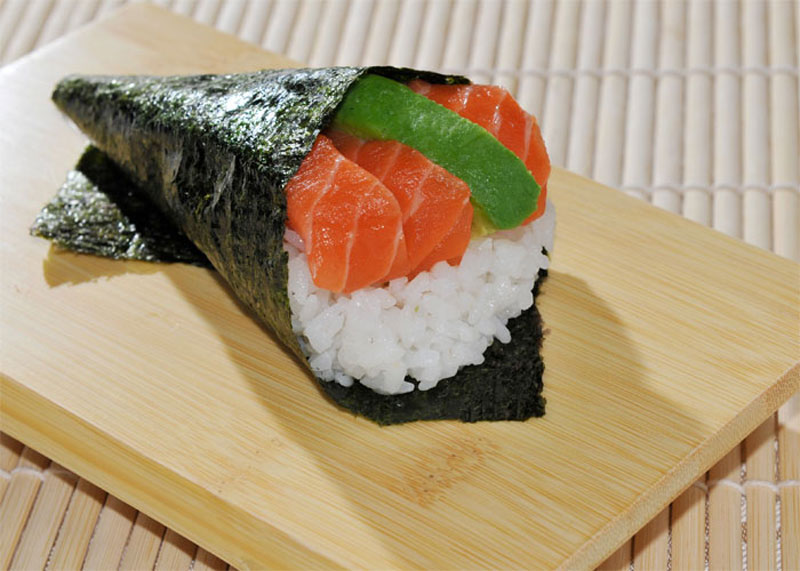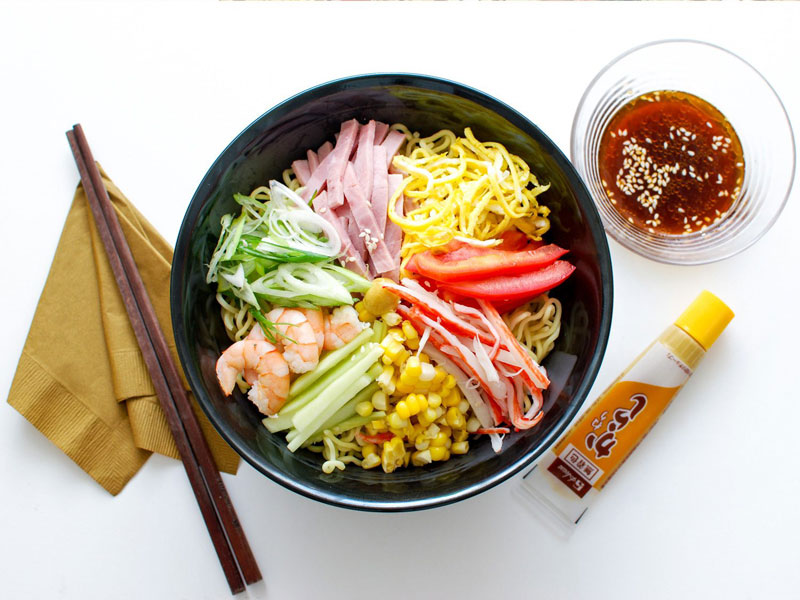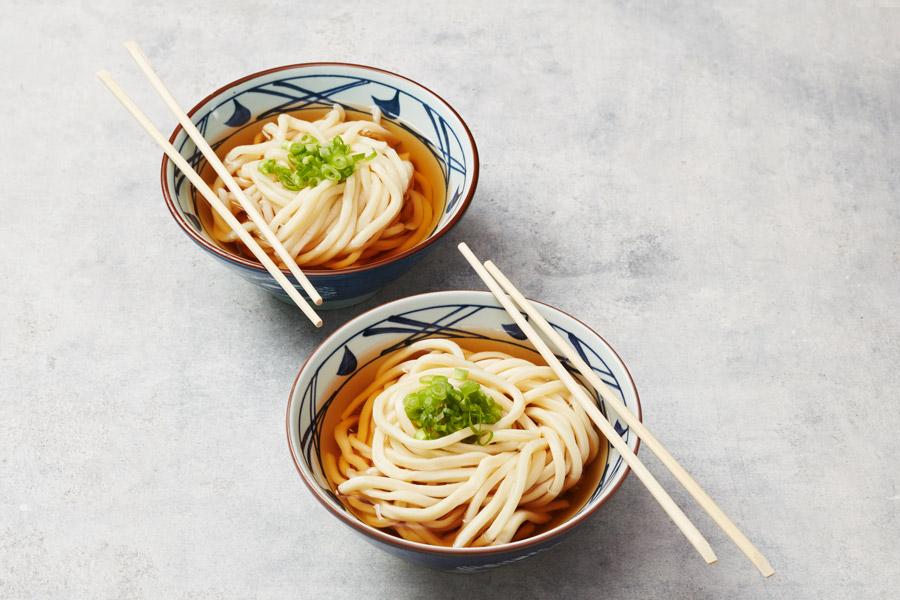The culinary landscape of Japan is a rich patchwork of flavors and customs, held in high esteem worldwide. At the heart of this culinary Japanese food and popular Japanese cuisine, which have become synonymous with the country’s cultural identity. Sushi, with its delicate balance of vinegared rice and fresh seafood, has captivated food enthusiasts everywhere, becoming a global icon of Japanese gastronomy. Equally beloved are the various noodles – from the hearty bowls of ramen to the subtle elegance of soba – each strand embodies the simplicity and refinement that Japanese cuisine is celebrated for. It is within this rich and diverse food landscape that we find the true essence of Japan’s culinary artistry. Japan offers an extensive palette of popular Japanese cuisine to indulge in. Dishes such as ramen, sushi, and tempura adorn the country’s culinary panorama, each embodying a seamless fusion of tradition and innovation.
In the words of Anthony Bourdain, delving into Japanese food dishes is like witnessing the chronicles of the world unfold upon your plate. It’s a cultural mosaic woven with flavors, where every meal commemorates the past and toasts to the future. Immerse yourself in the culinary essence of this island nation and allow your taste buds to navigate through a rich flavors that define the essence of Japanese food. Lastly, Bon appétit, or as the Japanese say, itadakimasu!
Sushi

Sashimi

Japanese food, a cornerstone of Japan’s culinary scene, presents a diverse array of savory options. Within this rich flavors, sashimi and sushi stands out as a masterpiece of culinary craftsmanship. This renowned Japanese dish, sushi involves the meticulous slicing of fresh fish, showcasing the skill of chefs wielding specialized knives. Each precise cut serves as a testament to Japan’s gastronomic heritage, highlighting the importance of culinary precision and expertise. Varieties such as Salmon or Tuna are particularly celebrated for their exquisite melt-in-the-mouth texture.
Popular Japanese cuisine sashimi, offers a wide range of choices, often spotlighting specific parts of the fish, with the belly prized for its unmatched flavor and tenderness. For the adventurous palate, delicacies like Octopus or the infamous Fugu fish present intriguing possibilities. However, it’s essential to exercise caution, especially with the latter, as only certified chefs can safely prepare it due to its toxicity. Each Japanese food dish tells a unique story, providing a window into the country’s revered food culture. Japanese cuisine and food are deeply intertwined, with each dish embodying a legacy of culinary excellence and innovation.
Nigiri
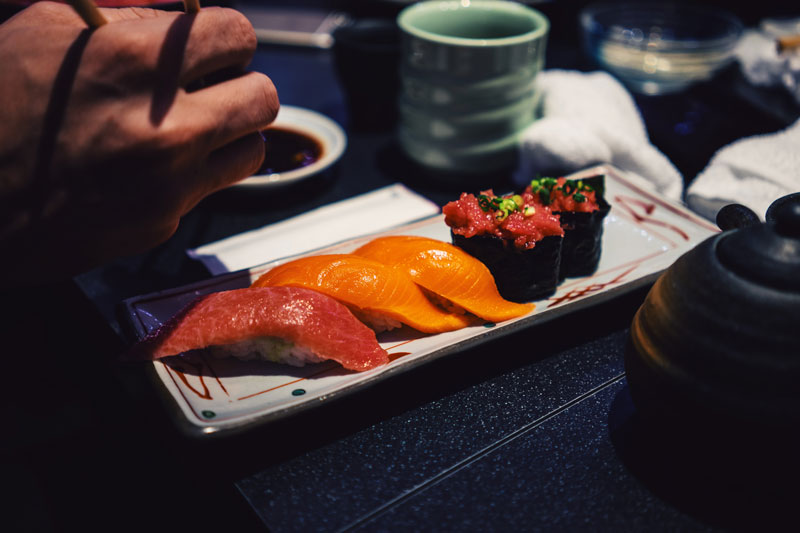
Nigiri, an emblematic dish of Japanese cuisine, mirrors aspects of Sashimi while integrating a crucial component: rice. With precise cuts, typically half the size of traditional Sashimi slices, the fish is expertly prepared from sushi. Widely accessible across Japan, Nigiri sushi is a staple at supermarkets and casual dining spots, showcasing the blending of traditional Japanese culinary practices with contemporary twists. To savor its essence fully, ensure the rice is warm and the fish is freshly sliced for sushi, with just a hint of Wasabi to accentuate the flavors. When using soy sauce, lightly dip the fish side of the Nigiri sushi, avoiding overwhelming saturation. This delicate interplay of tastes and textures embodies the allure of Japanese cuisine.
Chirashizushi
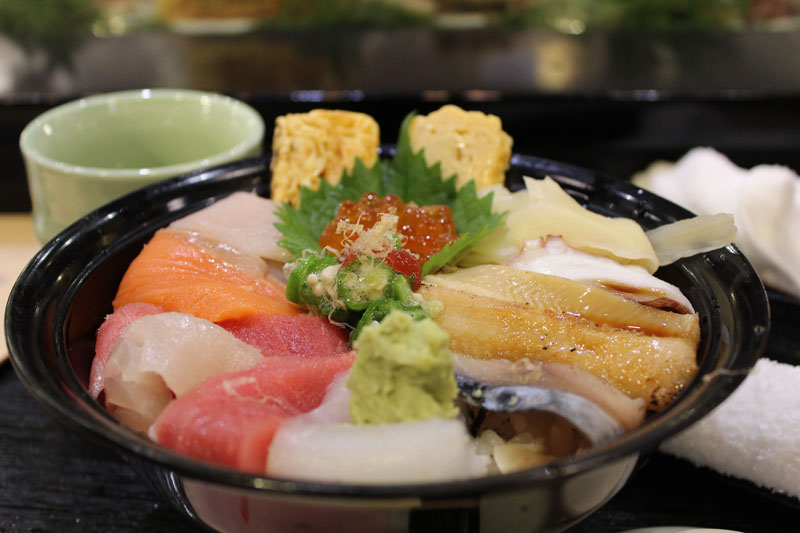
It, also referred to as “scattered Sushi,” Chirashi Sushi, a Japanese food dish, emerges as a delightful bowl of rice adorned with an array of raw fish pieces atop. These fish slices, frequently sourced from Nigiri or Sashimi leftovers, showcase diverse characteristics while offering exceptional value, making it a favored option among aficionados of Japanese cuisine dishes. This Japanese culinary creation adeptly satisfies hunger while delivering a delightful gastronomic journey.
In Japan, individuals often enhance the flavor by incorporating Wasabi and a touch of soy sauce, fostering a more relaxed dining atmosphere. Nevertheless, upscale dining establishments in Japan present elevated renditions of Chirashi Sushi, spotlighting premium fish quality and meticulous preparation methods, catering to those in pursuit of a more refined experience in popular Japanese cuisine.
Hosomaki

Hosomaki, a staple in Japanese food and popular Japanese cuisine, is a type of sushi that is both simple and elegant. This minimalist sushi form consists of a single filling, often tuna or cucumber, tightly rolled within nori and seasoned rice. As a quintessential expression of Japanese food, Hosomaki embodies the harmony and balance found in popular Japanese cuisine. Its slender size makes it an ideal choice for a light meal or a component of a larger sushi assortment, allowing diners to appreciate the subtle flavors and textures that are celebrated in Japanese food. Whether enjoyed at a bustling sushi bar or as part of a serene tea ceremony, Hosomaki is a delightful representation of the artistry and tradition that define popular Japanese cuisine.
Futomaki

When Japanese cuisine is brought up, sushi, particularly Futomaki, often springs to mind. Similar to Hosomaki but heartier due to its abundance of ingredients, Futomaki is a type of sushi that is typically rolled into special forms like Dragon Rolls. These sushi rolls feature fish slices or avocado atop or even in place of the nori wrapping. Crafting Futomaki sushi at home is simple with a bamboo mat and offers ample opportunity to explore diverse variations, making it a delightful venture within the realm of popular Japanese cuisine dishes.
Uramaki
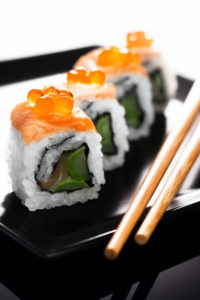
Japanese cuisine has gained worldwide acclaim, and one of its standout offerings is Uramaki sushi, also referred to as inside-out rolls. This particular sushi dish has garnered popularity beyond Japan thanks to its unique composition. Unlike traditional sushi, where the nori seaweed wraps the rice from the outside, Uramaki sushi reverses this, with the rice enveloping the nori. This innovative twist appeals to international tastes, as the familiar sensation of biting into rice is preferred over seaweed. Similar to other popular Japanese sushi varieties like Futomaki and Hosomaki, Uramaki sushi features similar ingredients but stands out with an extra layer of flavor through sesame seeds adorning its outer surface. In terms of size, it falls between the larger Futomaki sushi and the smaller Hosomaki sushi, delivering a balanced culinary experience that represents Japan’s rich gastronomic heritage.
Onigiri

In Japanese cuisine, the Onigiri (おにぎり) emerges not just as a snack in Japan, but also as a beloved variety of sushi. This rice ball, a cornerstone of popular Japanese cuisine, graces the shelves of supermarkets nationwide, embodying Japan’s culinary heritage. Fashioned from a humble yet gratifying blend of rice and Nori (dry seaweed), it adopts the triangular form that captivates both the sight and the taste buds. While conventionally stuffed with raw fish—a common sushi filling—contemporary renditions boast fillings such as chicken and pork, catering to a spectrum of preferences.
Esteemed as a customary school lunch item for children and revered as a favored treat for all generations, Onigiri encapsulates the comfort of Japanese food. What enhances its allure further is its ease of preparation at home; devoid of the necessity for raw fish or specialized tools like a bamboo mat, anyone can effortlessly concoct this savory indulgence using basic ingredients akin to crafting an omelette. Within the vibrant panorama of Japanese culinary delights, Onigiri occupies a position as a versatile and adored dish, much like various forms of sushi.
Gunkanmaki
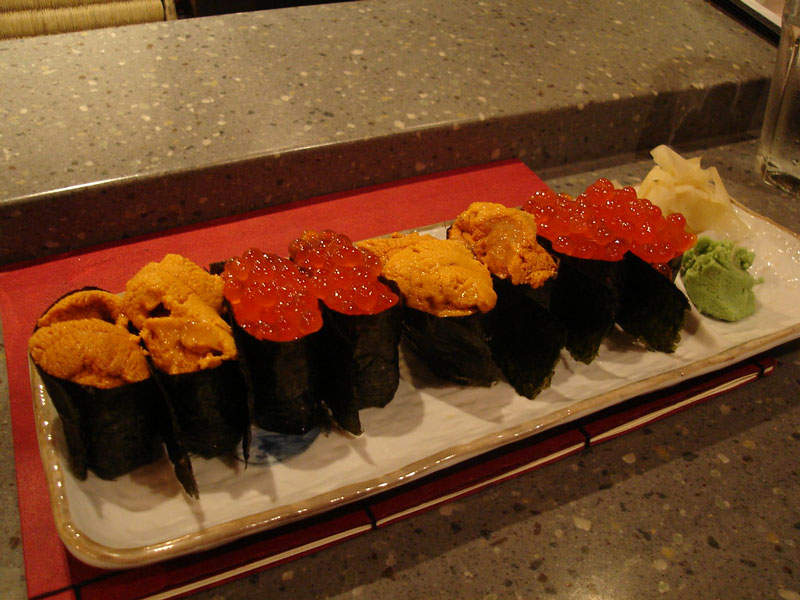
Known as the ‘battleship’ sushi roll, Gunkanmaki epitomizes Japanese cuisine. This sushi dish, seldom found beyond Japan, epitomizes the culinary mastery of Japan and its diverse gastronomy. Gunkanmaki presents sushi rice ensconced in a seaweed strip, with additional nori employed to secure tender, free-flowing, or finely diced components. Coveted ingredients encompass fish roe, nattō, or Uni, providing a glimpse into Japan’s revered culinary landscape that elicits either adoration or aversion among aficionados of popular Japanese sushi cuisine.
Sasamaki
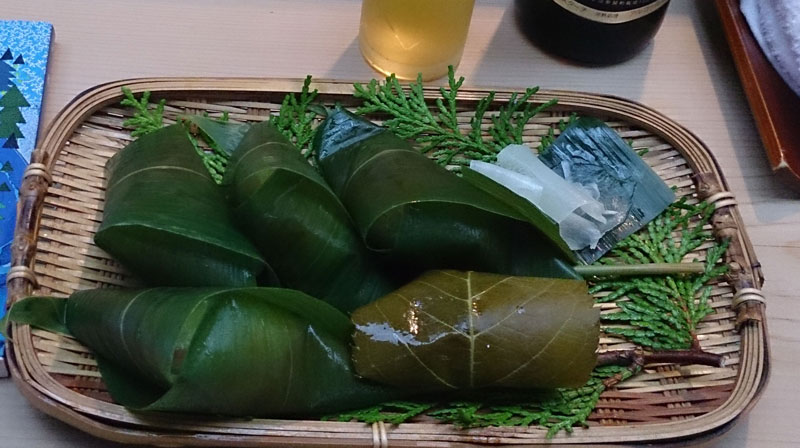
In Japan’s culinary landscape, Sasamaki emerges as a distinctive offering, akin to a traditional form of sushi. This Japanese culinary creation showcases rice delicately wrapped in bamboo leaves, intricately bound with the same string used in bamboo mats. This leaf-binding technique not only preserves Sasamaki’s integrity, especially in humid conditions but also adds to its aesthetic appeal, much like the presentation of sushi. Elevating its taste, the rice is seasoned with soy sauce or other simple flavorings, reminiscent of sushi rice preparation. While this staple of Japanese cuisine is easily found in supermarkets nationwide, its true essence, similar to that of sushi, is best experienced amidst the tranquil countryside, complemented by locally-sourced ingredients.
Oshizushi

Oshizushi sushi stands as a cornerstone of Japanese cuisine, hailing from the Kansai region, notably around Osaka. Distinguished from many other Japanese food dishes, Oshizushi sushi showcases cooked or cured fish rather than the customary raw variety. This revered sushi is crafted meticulously, as fish and rice are delicately pressed and shaped within a traditional wooden block mold known as an Oshibako. After the molding process concludes, the resulting delicacy is sliced into compact, bite-sized pieces, a testament to the culinary finesse embedded within Japanese sushi culture. Amidst your culinary adventures in Japan, Oshizushi sushi undeniably emerges as a must-try dish, particularly when traversing Osaka, renowned for its array of popular Japanese sushi cuisine choices.
Fugu
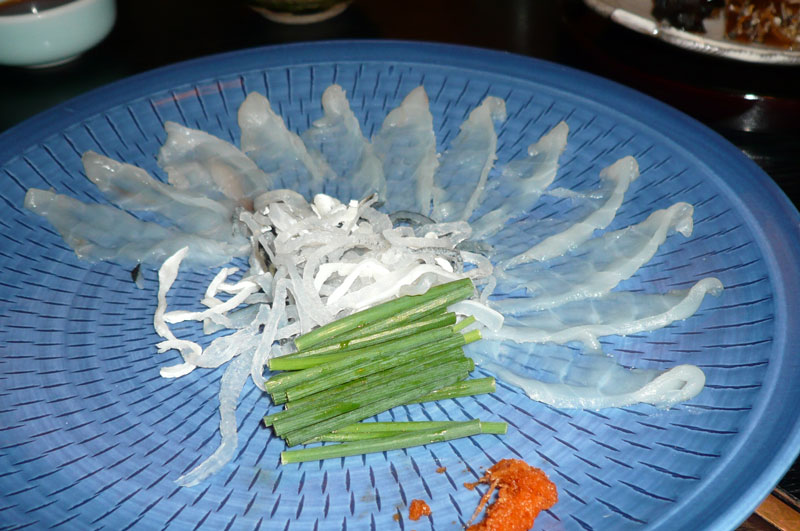
Japanese cuisine is renowned for its daring and illustrious dishes on the dining table. Moreover, among these culinary delights is Fugu sushi, a poisonous, bloated spikey fish that holds a unique distinction in Japan. Furthermore, featured notably in The Simpsons episode where Homer nervously samples it, Fugu is meticulously prepared by seasoned sushi chefs who undergo years of rigorous training to skillfully extract its toxic elements, ensuring a safe and exquisite dining experience.
Even the Emperor is forbidden from partaking in this delicacy. When expertly dissected, Fugu sushi offers a unique flavor profile, gracing the menus of esteemed fine dining establishments across the country. However, due to the scarcity of expertise required for its safe preparation, we caution against consuming it elsewhere, outside of specialized sushi restaurants.
Rice Dishes

Rice, the cornerstone of Japanese food, has given rise to a plethora of popular Japanese cuisine dishes, each reflecting the country’s rich culinary heritage. From sushi to donburi, rice forms the heart of Japan’s gastronomic identity.
Japanese Curry
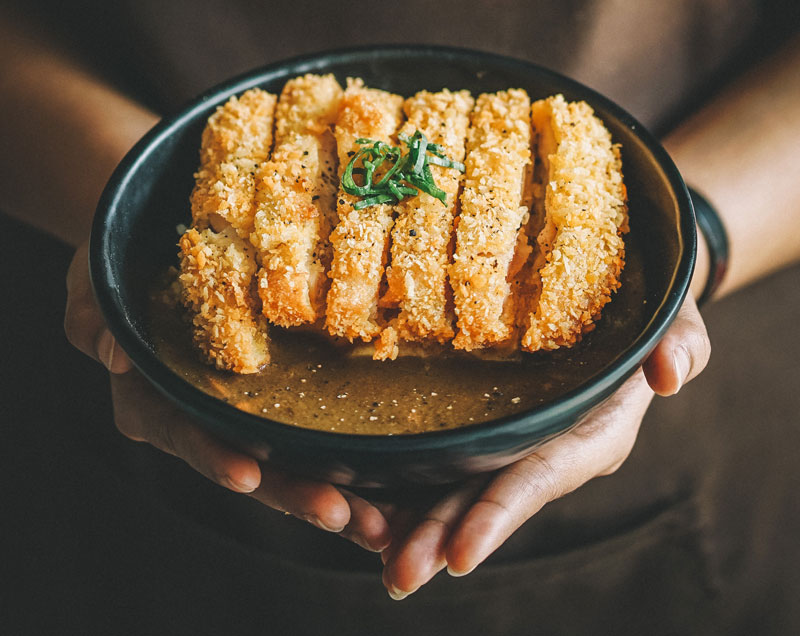
Japanese food dishes, a aspect of Japan’s culinary landscape, encompass a multitude of flavors and traditions. Among these, Japanese curry emerges as a cornerstone, reminiscent of gravy cascading over rice. Its origins trace back to the Meiji Restoration era, where Japan’s introduction to this luscious fusion stemmed from trade exchanges with Britain, who acquired it from India. However, its widespread embrace occurred later, catalyzed by its integration into the menus of the Japanese Navy and Army during the 20th century, eventually becoming a staple in every school cafeteria nationwide.
In contemporary Japan, Japanese cuisine reigns supreme over palates, surpassing even sushi in popularity. Japanese food dishes, particularly curry, manifest in diverse forms, often featuring an array of meats. Outside Japan, it commonly pairs with Chicken Katsu—a deep-fried and breaded delight. However, within Japan, culinary explorations unveil a myriad of interpretations, such as succulent beef slices harmonizing with potatoes and carrots atop a mound of rice. Amidst Japan’s culinary diversity, the enduring allure of Japanese food dishes, especially curry, firmly establishes them as elements of Japanese cuisine.
Donburi
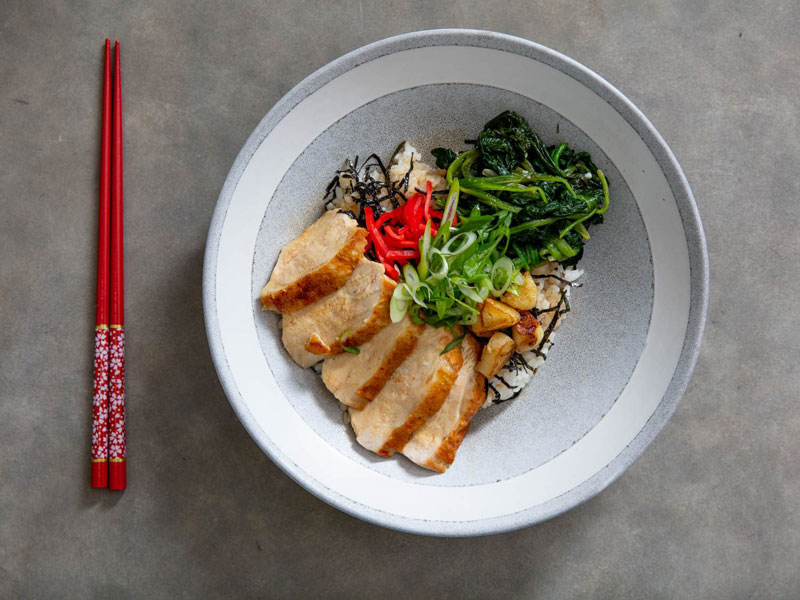
One of Japan’s treasured culinary delights celebrated globally is Donburi, a classic rice bowl dish showcasing fish, chicken, or beef, often paired with vegetables. Furthermore, for the daring palate, Unagi (eel) introduces an extra layer of thrill. Moreover, Donburi sauces reflect Japan’s diverse seasons, ingredients, locales, and flavors, with many incorporating dashi infused with soy sauce and mirin. Lastly, a Donburi variation is Oyakodon, a hearty blend of chicken, egg, and spring onions simmered together and served over a mound of rice—an example of Japan’s abundant culinary legacy in Japanese cuisine.
Hayashi Rice
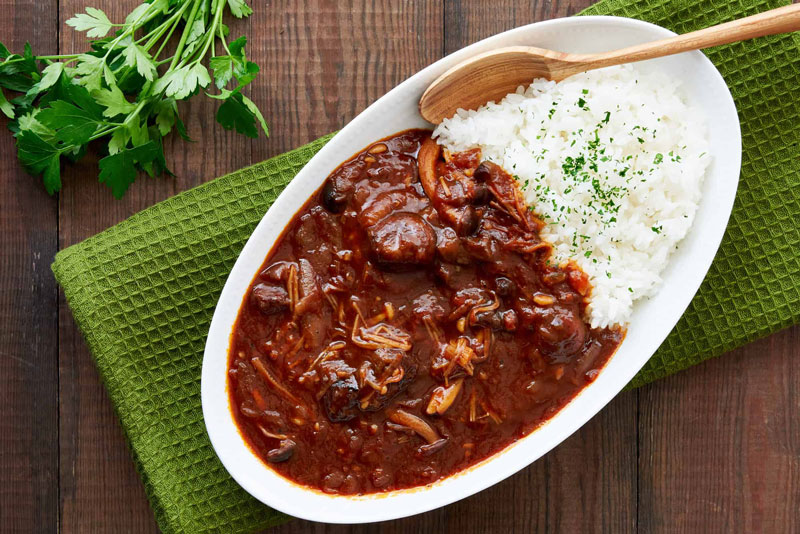
In the realm of Japanese cuisine, this luscious creation stands as a shining example of cultural amalgamation. Emerged during the late 19th century, courtesy of a French engineer toiling in Japan’s mines, it epitomizes the harmonious fusion of Western and Japanese culinary traditions. Meticulously crafted, this Japanese dish intertwines the robust flavors of red wine with the savory richness of tomato sauce, culminating in a luscious demi-glace. Embellished with tender beef, onions, and button mushrooms, it echoes the elegance of classic French stews. Though it may be somewhat elusive, this dish from Japan has garnered widespread acclaim throughout the nation.
For aficionados of Japanese gastronomy, this culinary marvel is an essential indulgence, providing a glimpse into the captivating world of Japanese cuisine.
Omurice
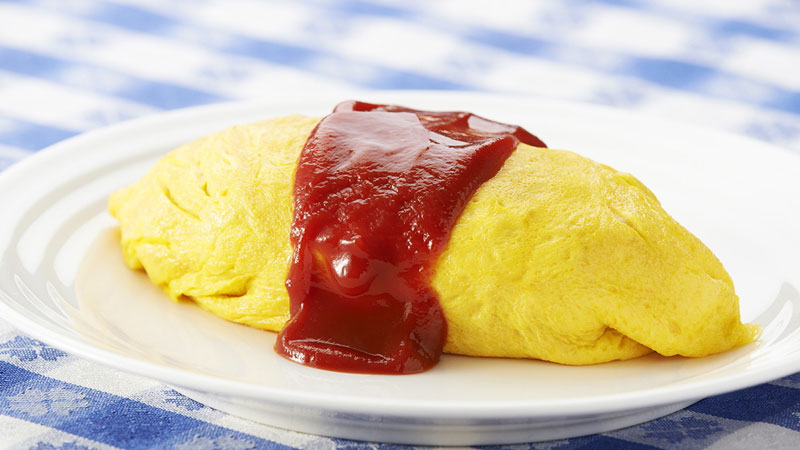
Omurice stands as a definitive example of Japanese cuisine, seamlessly blending Western influences with the distinctive culinary artistry of Japan. This dish, essentially a luscious omelette enveloping flavorful seasoned rice and an array of fresh fridge ingredients, epitomizes the harmonious fusion of tastes that characterizes popular Japanese cuisine. Typically accompanied by a crisp salad and generously adorned with tangy tomato ketchup, Omurice holds a place in Japanese home cooking, especially by youngsters. While it may occasionally grace the menus of select casual eateries within Japan, beyond its borders, it remains somewhat of a culinary rarity. However, once you’ve indulged in the delightful marriage of fluffy omelette and zesty ketchup atop your Omurice, it seamlessly integrates into your gastronomic exploration of Japan and its culinary delights.
Tamago Kake Gohan
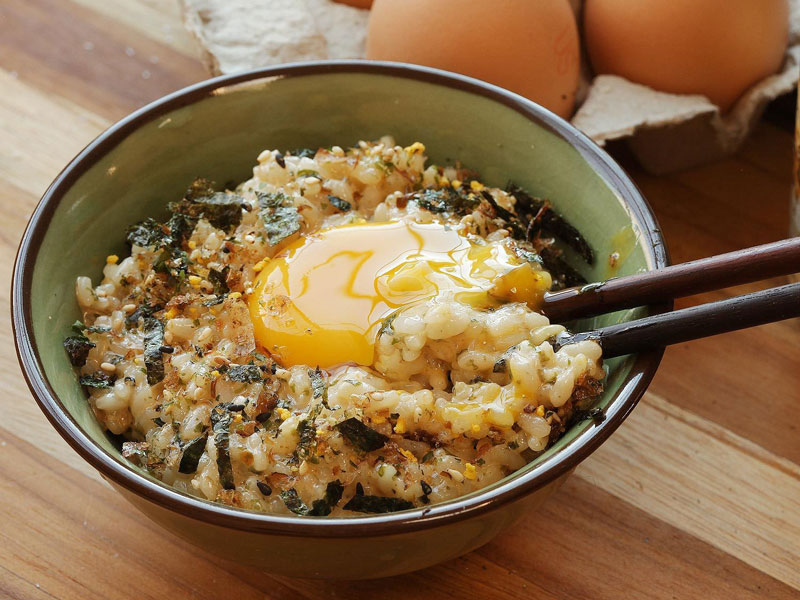
Tamago Kake Gohan, a dish in Japanese cuisine, epitomizes the essence of traditional Japanese food dishes. Moreover, it consists of cooked rice adorned with a raw egg, often delicately poured into a well within the rice. Furthermore, this delightful culinary creation is elevated with a touch of soy sauce in the egg mixture, enriching its flavor profile. Lastly, typically savored as a breakfast option, Tamago Kake Gohan holds a position akin to ordering eggs on toast at a restaurant or café. Further, making it a sought-after choice among enthusiasts exploring popular Japanese cuisine and snacks in Japan.
Ochazuke

For centuries, Japanese cuisine has delighted palates across Japan, with Ochazuke standing as a timeless favorite. Originating during the illustrious Heian period, this traditional Japanese food dish involves the ceremonial pouring of a tea and water mixture over a bed of rice. It harkens back to a time when it was all the rage among the elite, adorned with toppings like dry seaweed, umeboshi plums, salted salmon, and marinated pollock roe, embodying the rich tapestry of Japan’s culinary heritage.
Even in modern times, Ochazuke remains a staple in Japanese cuisine, valued for its versatility in transforming leftover rice into a delightful snack. Whether enjoyed at home or in upscale restaurants, this dish continues to captivate taste buds with its enduring charm. Since the 1950s, supermarkets have met the demand for instant Ochazuke packets, ensuring accessibility to all who yearn for a taste of Japan’s culinary treasures.
Kamameshi

Kamameshi, a delicacy of Japanese cuisine, embodies the culinary essence of Japan. Furthermore, this dish, reminiscent of the Korean Bibimbap, is lovingly prepared in an iron pot, symbolizing the rich tradition of Japanese culinary arts. Moreover, the term ‘kamameshi,’ which translates to “kettle rice,” aptly describes this hearty blend of meat, seafood, and vegetables, simmering together over a gentle flame.
As the ingredients meld, the rice undergoes a delightful transformation, developing a char that infuses the dish with a smoky aroma and a satisfying crunch, hallmark characteristics of Japanese cuisine. This culinary technique not only enhances the flavor but also adds a unique texture synonymous with Japanese food. Kamameshi transcends mere sustenance; it represents a celebration of Japanese food dishes, offering a rustic yet refined experience deeply rooted in tradition and flavor
Takikomi Gohan
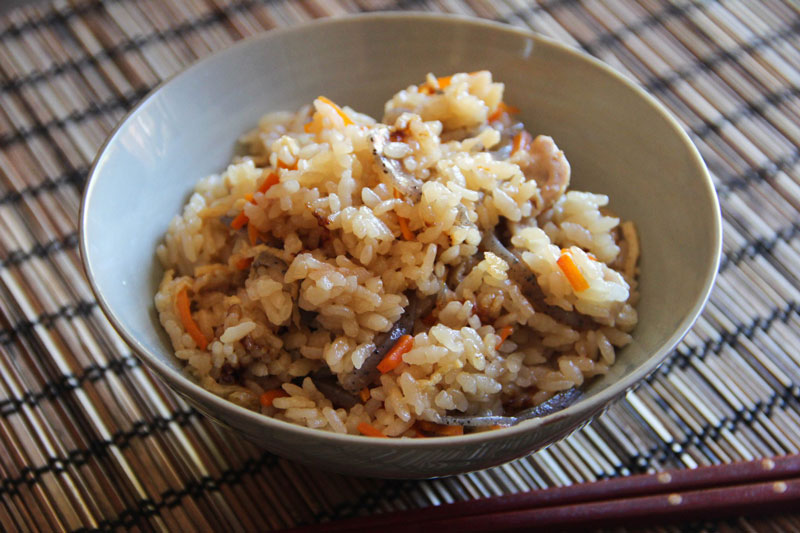
In Japan, is a culinary masterpiece reminiscent of Chinese fried rice, stands tall among the array of Japanese food delights. This Japanese cuisine amalgamates essential elements such as dashi, soy sauce, meats, fish, and veggies into a symphony of flavors, encapsulating the very essence of Japan’s culinary artistry. Esteemed for its comforting familiarity and unique Japanese twist, this dish holds a special place in the hearts of Japanese food enthusiasts.
Rooted deeply in Japan’s culinary tradition, this dish mirrors the preparation techniques of Chinese fried rice while imbuing it with distinctly Japanese flavors, notably accentuating ingredients like dashi. Whether savored as a quick snack or a fulfilling meal, it serves as a shining example of the vibrant diversity within Japan’s gastronomic landscape.
Sekihan
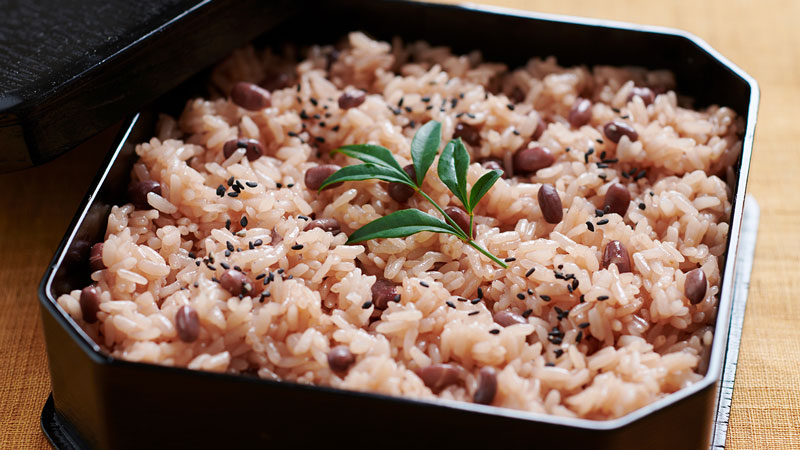
In Japan, Sekihan shines as an example of Japanese cuisine, a exemplary Japanese food offering deeply ingrained in the nation’s culinary traditions. This Japanese food dish marries glutinous rice with adzuki red beans, creating a delightful symphony of flavors and textures. Sekihan occupies a special position in Japanese culture, frequently adorning tables during joyous occasions such as birthdays, weddings, and public holidays. Its significance transcends mere sustenance, becoming synonymous with celebration itself, with people often rallying to “let’s Sekihan” as a cheerful alternative to “let’s celebrate.” This Japanese food staple, also referred to as ‘red rice,’ encapsulates the spirit of festivity.
Moreover, it’s customary to sprinkle toasted sesame seeds atop Sekihan, further elevating its already sumptuous taste profile. Exploring its roots, the crimson hue of Sekihan’s rice traces back to ancient times when cultivated rice naturally bore a red tint. Presently, Sekihan remains a reigning favorite among Japanese cuisine enthusiasts, serving as a testament to the enduring connection between Japan and its rich culinary legacy.
Yaki
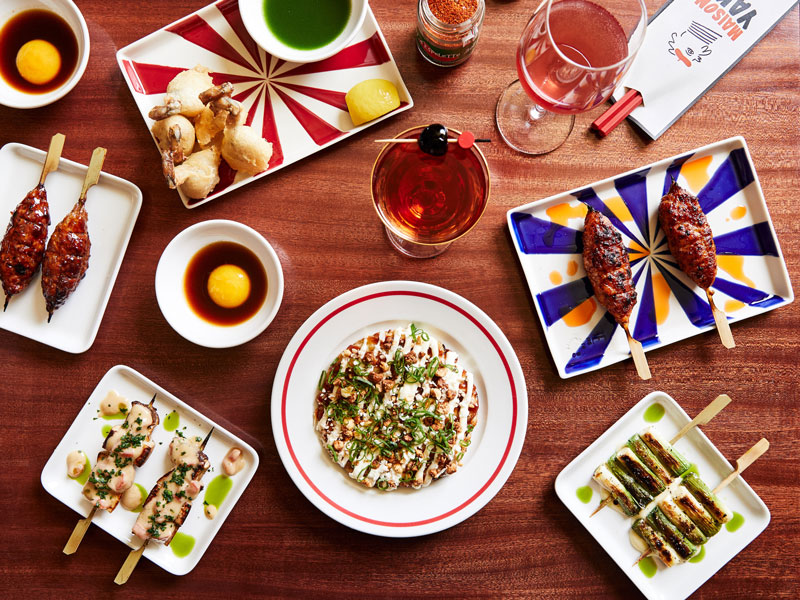
The term “Yaki” derives from “yaku (焼く),” which translates to ‘grill, broil, or pan-fry’ in English. This linguistic connection aptly reflects its culinary essence. Within the vibrant Japanese cuisine, “yaki” stands as a fundamental element. Whether indulging in street food or dining at renowned establishments, the enticing scent of sizzling delicacies permeates the air. In Japan, encountering these dishes, symbolic of its gastronomic expertise, is inevitable. Whether craving familiarity or culinary exploration, “yaki” dishes offer a glimpse into the diverse array of Japanese food offerings.
Yakitori
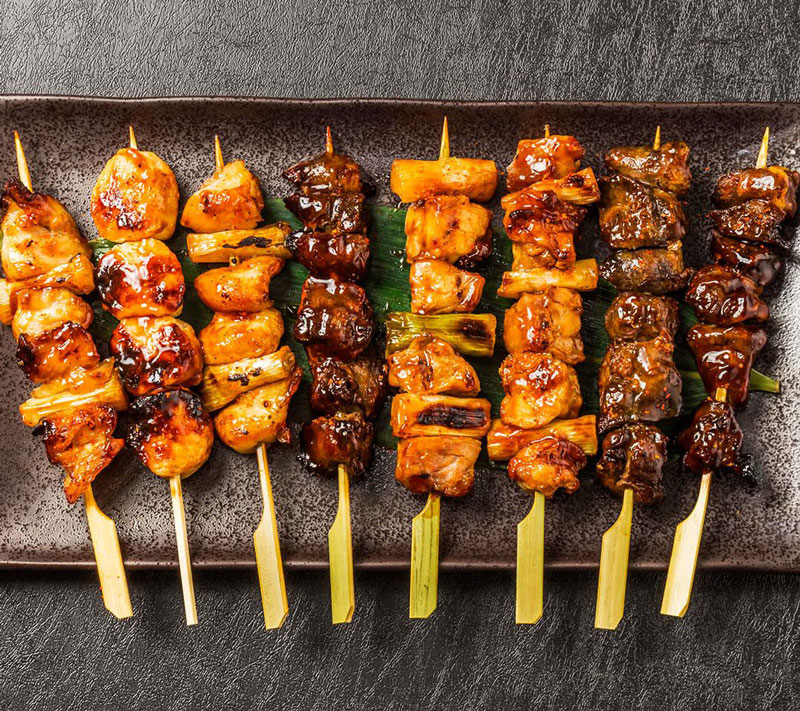
Japanese cuisine boasts a rich culinary wonders, with Yakitori standing as a definitive representative. These Japanese food dishes feature skewered and grilled chicken, embodying the essence of traditional gastronomy. Rooted in Japanese culinary culture, “yaki” denotes grilling, while “tori” signifies chicken, resulting in a flavorful combination. Crafted from either steel or bamboo, these skewers offer a delightful finger food experience suitable for any occasion. While simpler establishments may offer basic Yakitori variants, a venture into an Izakaya reveals an expansive array of choices, showcasing not only chicken flesh but also various other parts. Seasoned with a harmonious blend of salt and tare sauce, Yakitori perfectly complements a crisp, refreshing beer, epitomizing the allure of Japan’s popular cuisine.
Yakisoba
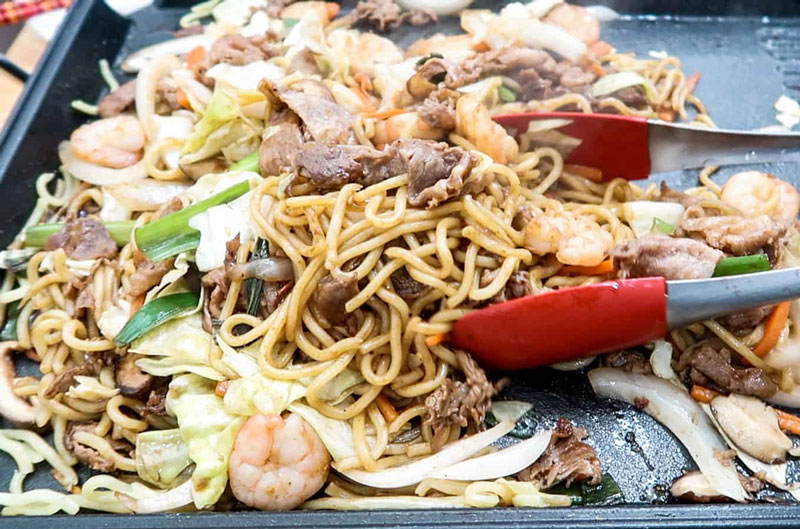
Japanese cuisine presents a vibrant array of culinary delights, with Yakitori serving as an emblematic example. These Japanese delicacies feature skewered and grilled chicken, encapsulating the essence of traditional gastronomy. Anchored in the heart of Japanese culinary tradition, “yaki” symbolizes grilling, while “tori” represents chicken, resulting in a savory fusion. Crafted from either steel or bamboo, these skewers provide a delightful finger-food experience suitable for any occasion. While simpler eateries may offer basic Yakitori options, an exploration of an Izakaya unveils a vast selection, featuring not only chicken but also various other cuts. Seasoned with a harmonious blend of salt and tare sauce, Yakisoba, pairs perfectly with a crisp, refreshing beer, epitomizing the allure of Japan’s renowned cuisine.
Yakisoba Pan
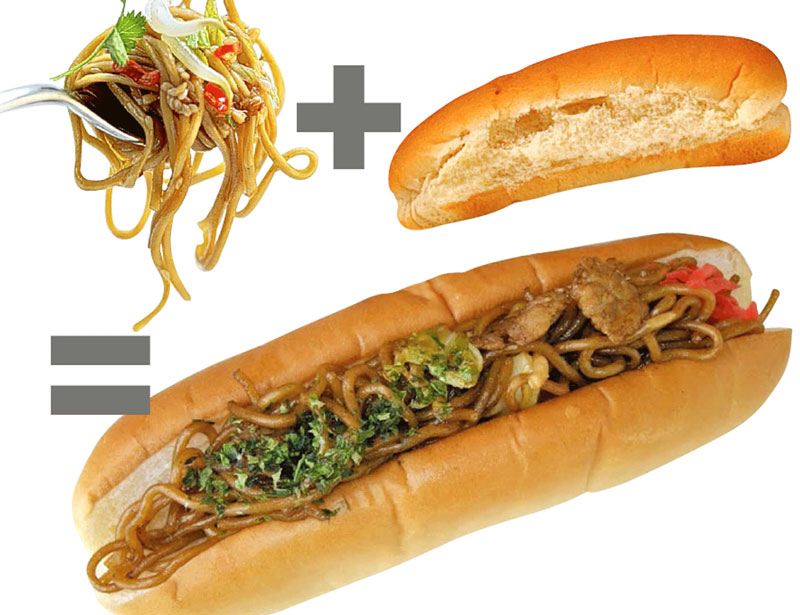
The Yakisoba Pan represents a brilliant fusion of Japanese food traditions with a Western-style hot dog bun. Furthermore, this innovative creation seamlessly blends the essence of Yakisoba, a Japanese food dish, with the familiar comfort of a soft bun. Additionally, the dish showcases stir-fried noodles, delicately seasoned with a savory sauce, nestled within the bun and adorned with traditional Japanese accents like seaweed (nori), pickled ginger, and a drizzle of creamy Japanese mayonnaise.
Moreover, by departing from the conventional meat filling of a hotdog, the Yakisoba Pan introduces a refreshing twist to Japanese cuisine. Lastly, it serves as a shining example of the adaptability and universal appeal of popular Japanese cuisine, offering a delightful, meat-free alternative that bursts with satisfaction and flavor.
Yakiniku
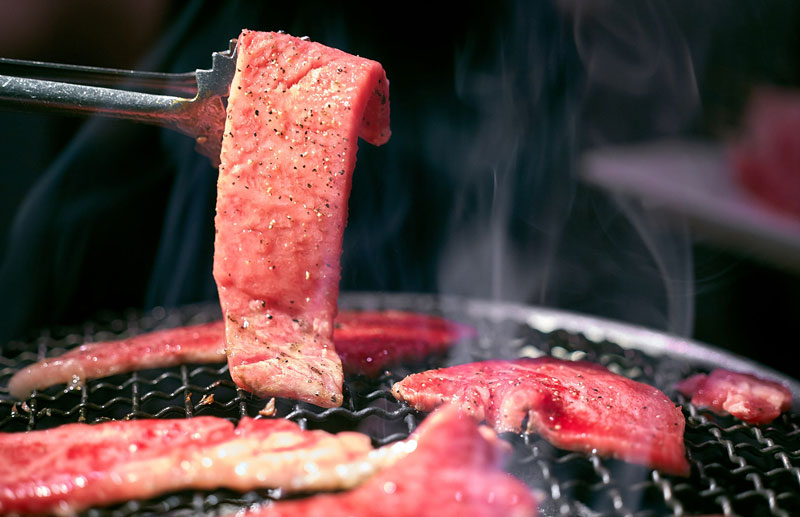
For aficionados of Japanese cuisine, Yakiniku stands out as a delightful indulgence. While its origins have Korean roots, it seamlessly integrates into the realm of popular Japanese food dishes. Aptly translating to “grilled meat,” this dish mirrors Korean counterparts like Bulgogi. The experience involves cooking meat on a table’s built-in grill and dipping it into flavorful sauces known as tare. It’s worth noting that historically, the Japanese didn’t embrace beef until the Meiji Restoration in the late 19th century, when even the Emperor himself began to enjoy it.
Taiyaki
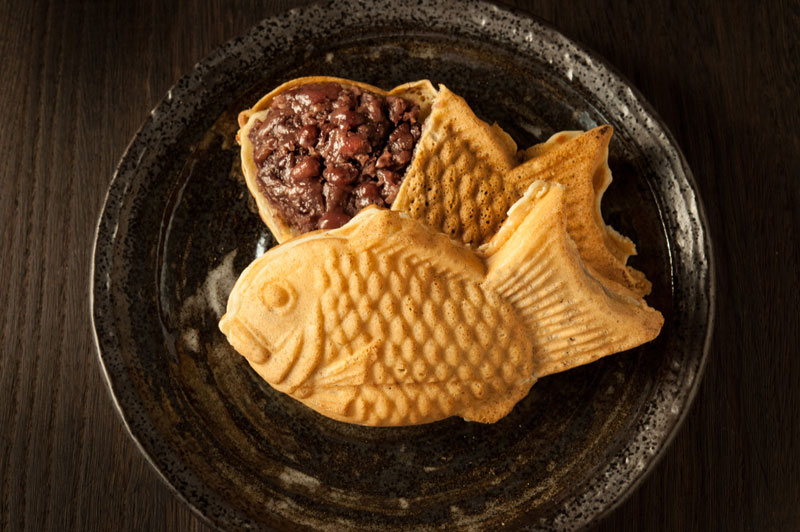
A traditional Japanese snack. Taiyaki is a fish-shaped waffle treat. They commonly fill Taiyaki with a sweetened paste of adzuki red beans, but they can also fill it with chocolate or custard. The batter for Taiyaki, similar to pancake batter, is poured into hot fish-shaped moulds. They add the filling and then fuse it together. Taiyaki should be on your must-try Japanese foods on your next trip.
Okonomiyaki
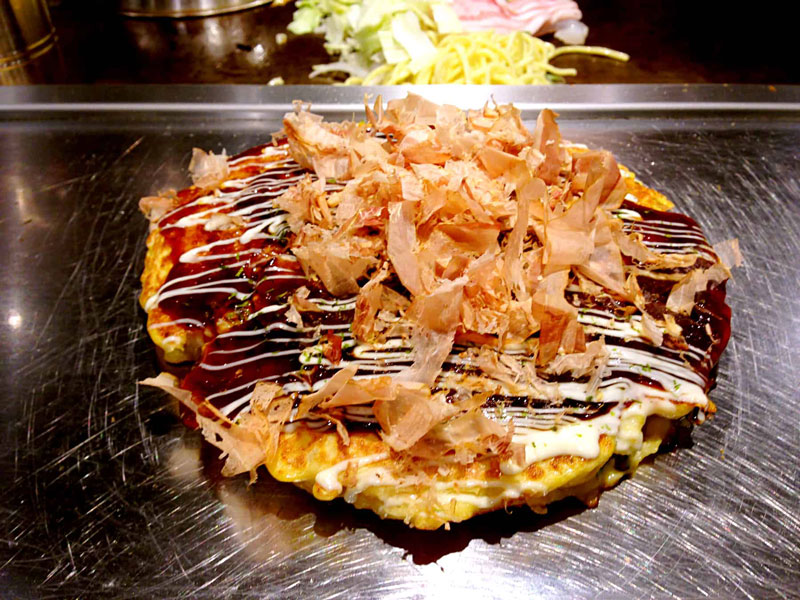
Okonomiyaki is a Japanese savoury pancake made of flour batter, grated yams, dashi, eggs, and shredded cabbage and topped with mayonnaise, special sauce, and bonito flakes. The most common version of Okonomiyaki is the Kansai version popular in Osaka. Other versions include additional fillings such as Yakisoba or layered cabbage, pork, and cheese that are part of the Hiroshima version.
Takoyaki
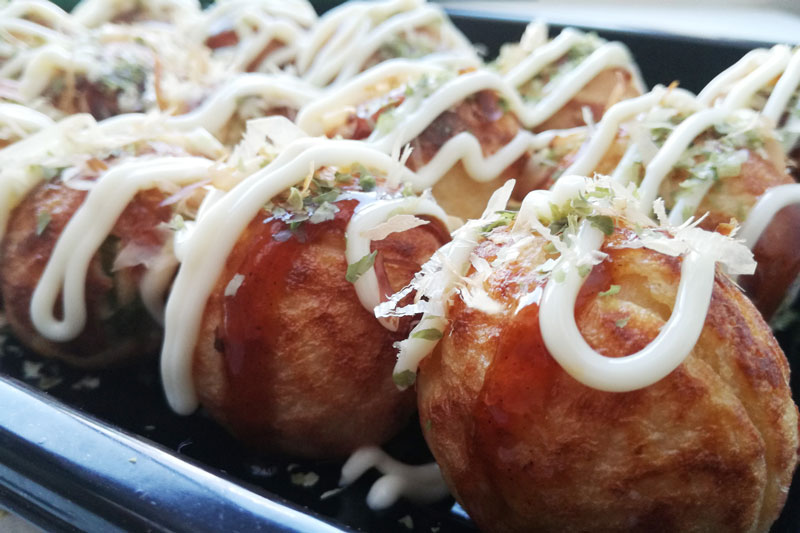
One of Japan’s most famous and appetising street food snacks, Takoyaki translates to octopus roast. You cook Takoyaki as battered balls in a special moulded pan, filling them with diced cooked octopus, spring onion, pickled ginger, and tempura scraps, and brush them with the special tangy Takoyaki sauce.
Mayonnaise is topped on the finished octopus balls along with delicious sprinkles of bonito flakes, which seem to sway from the heat. You can buy Takoyaki ready-made but they are best enjoyed by market stalls.
Teppanyaki
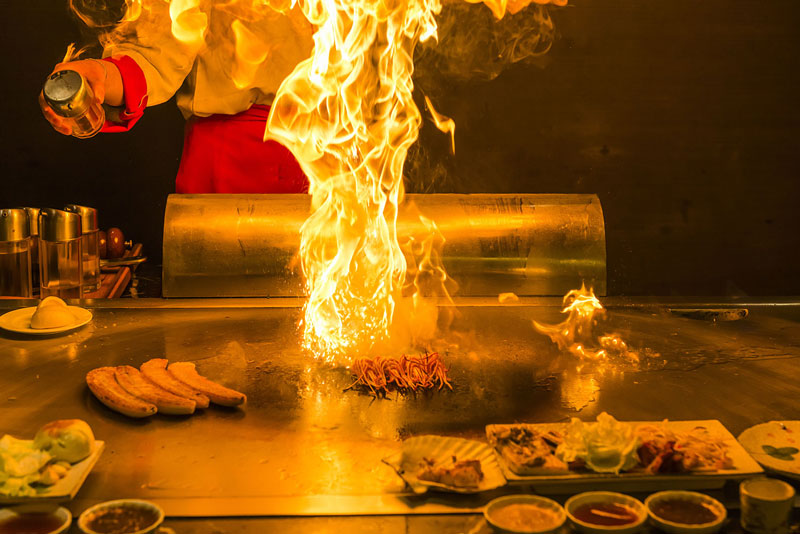
Teppanyaki is more a style of cooking than a type of dish. Moreover, the term ‘teppanyaki’ translates in English to ‘metal plate for grilling’, with ‘teppan’ meaning iron plate and ‘yaki’ signifying to grill, fry, or broil. Furthermore, teppanyaki is a historically new form of Japanese cooking by Japan’s standards, and it originated in 1945.
Equally important, this more unconventional Japanese cuisine was very popular among foreigners, first made famous by Benihana in 1964, in NYC. Lastly, beef, seafood, chicken, and assorted vegetables are all fried on the teppan with teppanyaki sauce, which consists of soy sauce, mirin, ponzu, and vinegar.
Yaki Onigiri
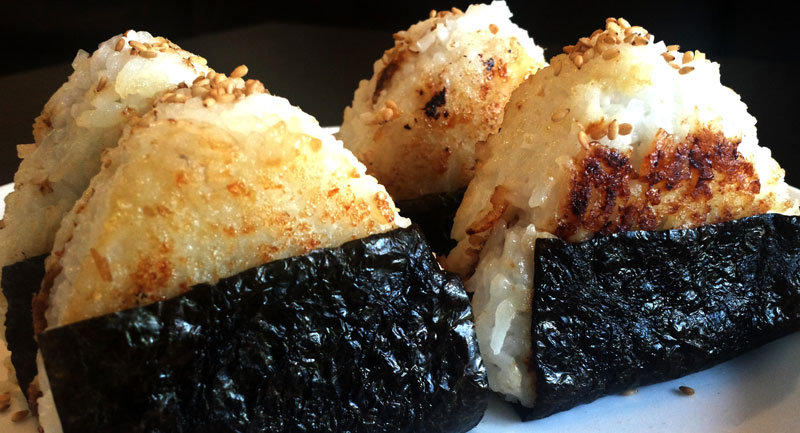
Yaki Onigiri, or grilled rice balls, is a delightful variation of the classic Onigiri, adding a crunchy exterior to the soft rice. Furthermore, this grilling process changes the texture and enhances the flavour, thus setting it apart from the usual Japanese food offerings. Moreover, as a healthier option compared to other fried treats, Yaki Onigiri retains the essence of food in Japan without compromising on taste.
Additionally, simple to prepare in your kitchen, this dish is a must-try for anyone looking to delve into the world of Japanese cuisine—a crispy, delicious experience that’s both traditional and innovative.
Himono
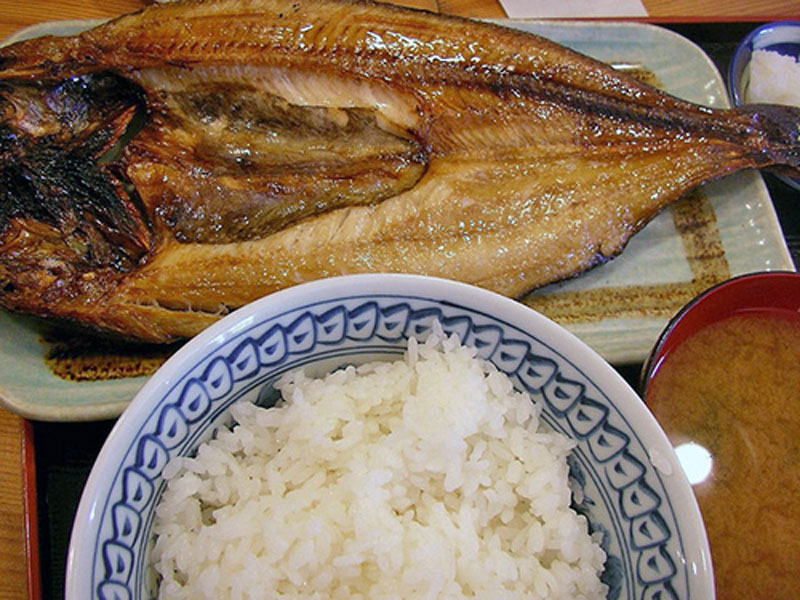
You may be familiar with the Japanese using seaweed (nori) and ginger to preserve fish but they also used techniques that are more common in South-East Asia – which was the preservation of fish using salt and drying naturally in the sun. You can eat Himono as a snack without any preparation. You can also grill or fry it and coat it with soy sauce to make it the main dish, which is often eaten with rice.
Soul Food
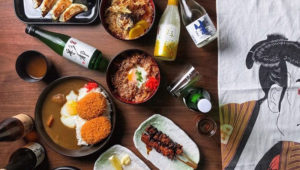
Now we’re entering into the realm of Japanese Soul Food. Recognize that the Japanese excel at taking recipes that aren’t originally theirs and reconstructing them. It is a uniquely Japanese manner, often enhancing the flavors! Skeptical? Try the Japanese fried chicken for proof. We celebrate Japan for its fresh fish and delicate rice dishes, but we must also acknowledge the palatable allure of its Izakaya specials. Whether at Izakayas, festivals, or local markets and konbinis, you’ll find many places selling Japanese soul food. Fried food to the Japanese is like hamburgers to Americans. In Japan, if you can eat it, you can fry it; for lunch, dinner and snacks.
Gyoza
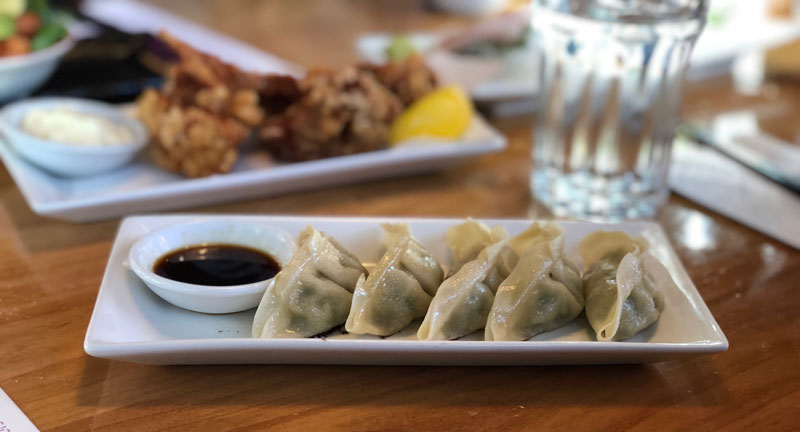
Gyoza is the equivalent of dumplings in Japan. The key distinction is that you steam and pan-fry them, creating a soft juicy center with a slightly crispy outer skin. Additionally, it can contain a range of different ingredients, including pork, chicken, prawns, and vegetables. These can be either cooked at home or eaten at restaurants. Moreover, they are best enjoyed with a cold beer or as a side order to your main dish. Finally, any Japanese food fan can easily polish off 10 of these babies, further testament to their deliciousness.
Tonkatsu
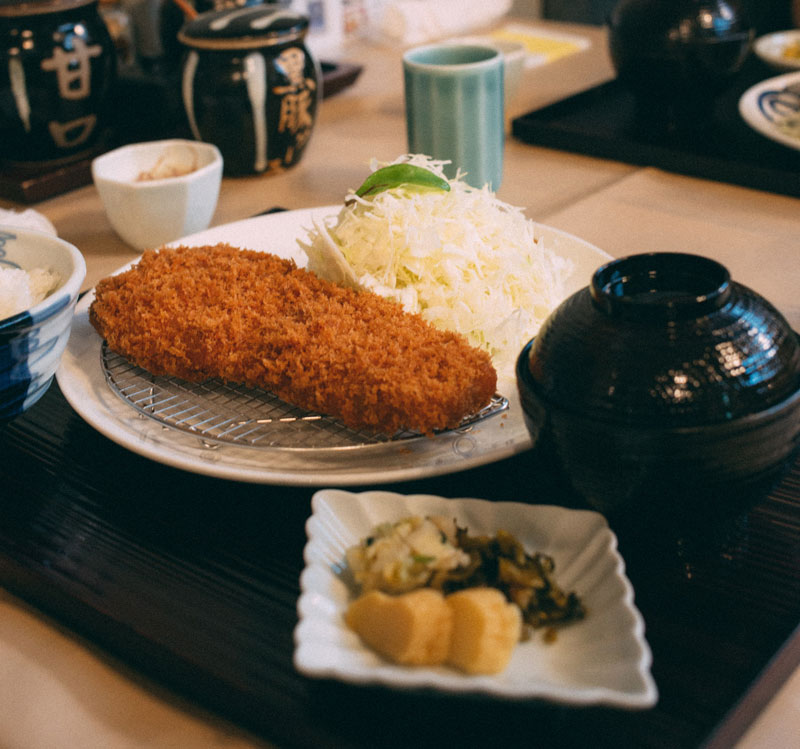
Tonkatsu is one of Japan’s favorite Western-style foods. Furthermore, to make tonkatsu, chefs coat slices of pork cutlets with panko breadcrumbs and deep-fry them in oil. Moreover, a local Tokyo restaurant called Rengatei first concocted Pork Katsu in Japan in 1899, marking the beginning of its culinary journey. Initially considered a type of yōshoku, additionally, chefs adopted the term ‘tonkatsu’ (pork katsu) in the 1930s.
Before Tonkatsu, Katsu was traditionally made from beef. During the Meiji era, Emperor Meiji encouraged Western eating habits and influenced his people to adopt this new eating habit. Further aligning with their bid for Japan to become a more modern country. Equally important, tonkatsu is served with a special Japanese sauce, lots of cabbage, and rice, making it a hearty meal. Lastly, it’s a great option as a starter dish and is part of the Katsudon dish, for its affordability and popularity in Japan.
Karaage
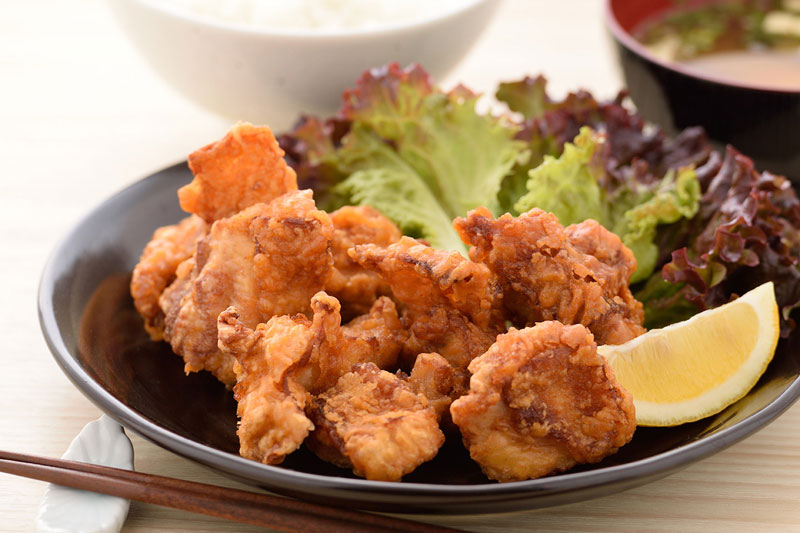
Japan makes the best-fried chicken in the world. Furthermore, Karaage meat is very juicy and has a strong umami taste. The chicken meat is marinated with ginger, garlic, soy sauce, and cooking sake prior to deep frying. Moreover, while Karaage is often found at convenience stores and even frozen. It’s always better to enjoy fresh Karaage at Izakayas or casual restaurants. Lastly, what’s more, this dish is a testament to the culinary expertise that Japan is renowned for, offering a simple yet satisfying experience with every bite.
Tempura

Tempura is one of the earliest Japanese dishes that developed as a result of European influences. Introduced by the Portuguese to Nagasaki in the 16th century, Tempura usually consists of seafood or vegetables that are lightly battered and deep-fried into irresistibly crunchy and light flavor bombs. Furthermore, the cooked Tempura is typically served with tentsuyu dipping sauce, a savory blend made from dashi soup, mirin, and soy sauce. Moreover, this dish has transcended its historical origins to become a staple in Japanese cuisine and beyond. Lastly, what’s more, Tempura’s unique preparation and delightful taste continue to captivate food lovers around the world.
Ebi Furai
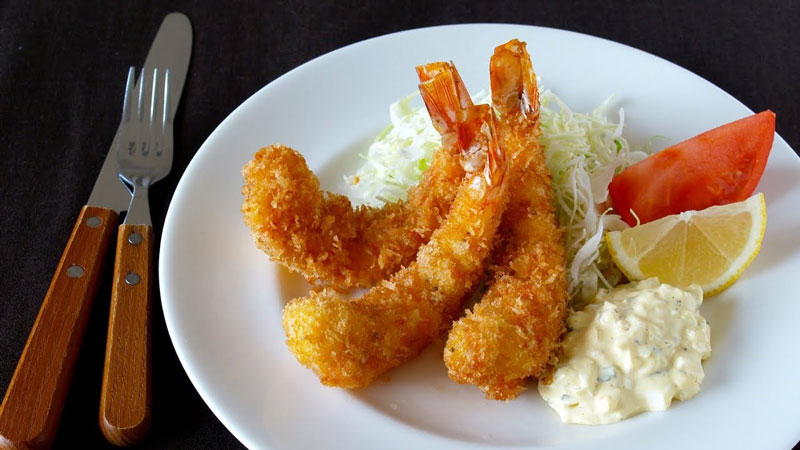
Ebi Furai, translating to “fried shrimp,” is a Yoshoku dish that arrived in Japan during the Meiji era between 1868 and early 1900. This culinary delight stands distinct from Tempura, boasting a unique texture and batter. Ebi Furai’s hallmark is its coating of crispy panko breadcrumbs, enveloping the tender, juicy shrimp within.
Firstly, often served as a delicious starter or as a vital component of a Donburi bowl, Ebi Furai is a testament to the fusion of Western techniques with traditional Japanese cuisine. Furthermore, it captures the essence of food in Japan, offering a crunchy, flavorful experience. Moreover, this dish is deeply rooted in the country’s diverse Japanese Food culture, representing both innovation and tradition.
Korokke
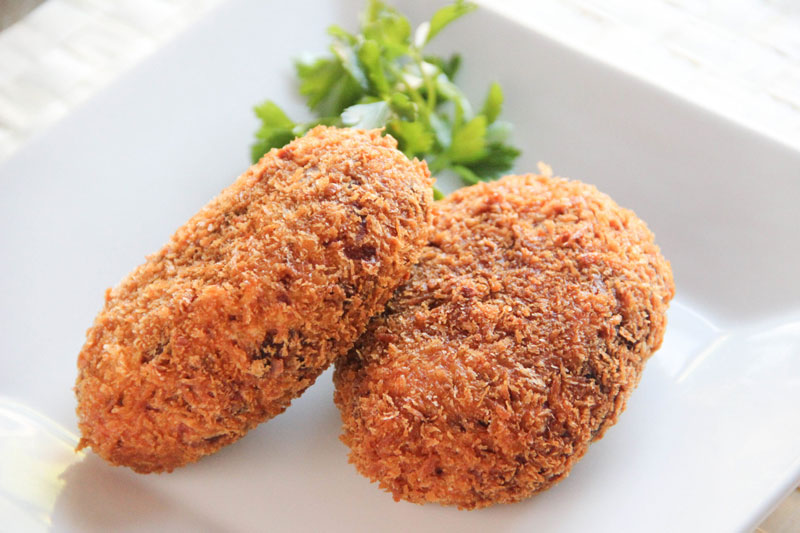
Another example of Yoshuku, Korokke is the Japanese version of French croquettes which was introduced in 1887. Although Korokke varies from the original croquette recipe, in its filling, which contains potatoes. Dairy processing technology had not been widely perfected at the time, which was the reason for this. One forms the mashed potato filling into a patty, covers it with panko breadcrumbs, and then fries it until it is crispy on the outside but still soft inside.
Kushiage
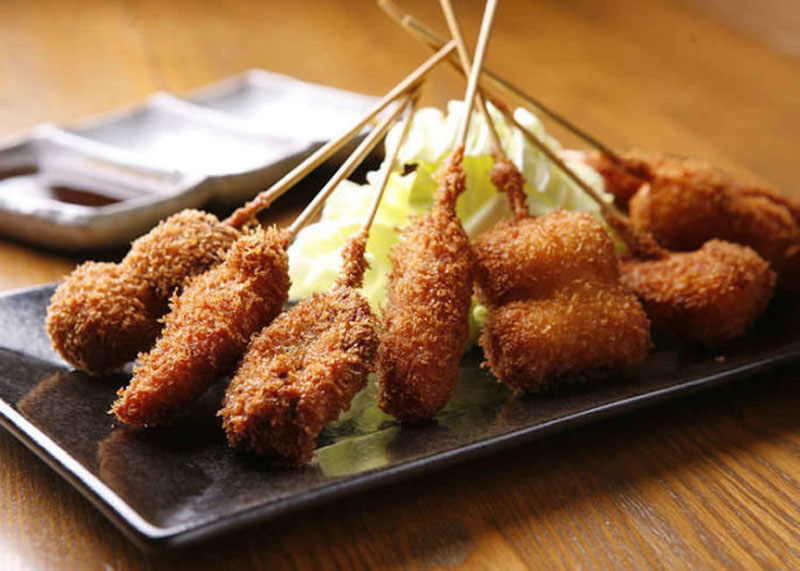
Kushiage, or Kushikatsu, is a delightful Japanese food with deep-fried skewered meat and vegetables. This dish offers a variety of meats and fish, catering to a range of palates. Originating in the vibrant neighbourhood of Shinsekai in Osaka. Kushiage has a rich history of being a staple for blue-collar workers since 1929. Renowned for its affordability and satisfying nature, Kushiage is not only a culinary icon but also embodies the spirit of food in Japan. Equally important, as a filling and economical choice, it has cemented its place in the heart of Japanese cuisine. Lastly, Kushiage represents the fusion of taste and tradition nationwide, further solidifying its status as a beloved dish.
Specials

Sometimes you’ll come across Japanese food that just doesn’t fit into a specific category. For those dishes that are still worth a special mention, read on.
Kaiseki
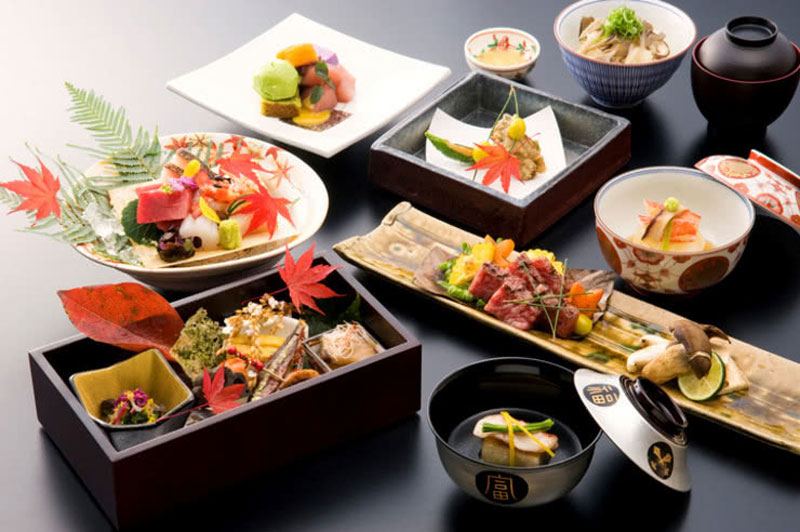
The Japanese version of “haute cuisine” where a chef prepares multiple courses of Edo-period meals. The preparation of an outstanding kaiseki-ryōri is considered an art form. Kaiseki is an amalgamation of traditional Edo-period imperial court cuisine (yusoku ryori), Buddhist monastery cooking (shoujin ryori), samurai household cooking (honjin ryori) and tea ceremony cuisine (cha kaiseki). Often served in ryokans all over Japan or small high-end restaurants.
Nasu Dengaku
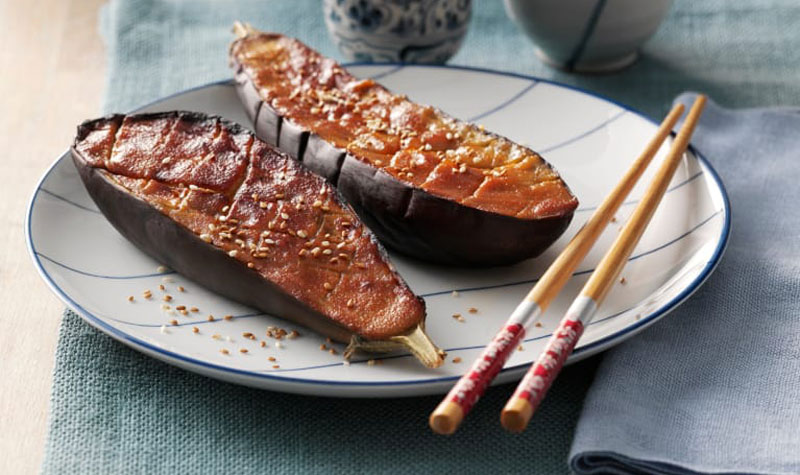
Nasu Dengaku is a vegan delight in Japanese cuisine that epitomises simplicity and flavour. This dish features halved eggplants, delicately scored and lovingly coated with a miso glaze. Further, strikes the perfect balance between sweet and savoury. Furthermore, oven-grilling caramelises the glaze, creating a palatable contrast with the soft, creamy flesh of the eggplant.
Historically, cooks prepared this dish over an open flame, adding a subtle smokiness that is in Japanese cuisine. Moreover, Nasu Dengaku is more than just a meal. It’s a culinary ritual that celebrates the natural goodness of Japanese food. Lastly, what’s more, it has become a favourite among vegans and food enthusiasts alike for its rich flavors and cultural significance.
Agedashi Tofu
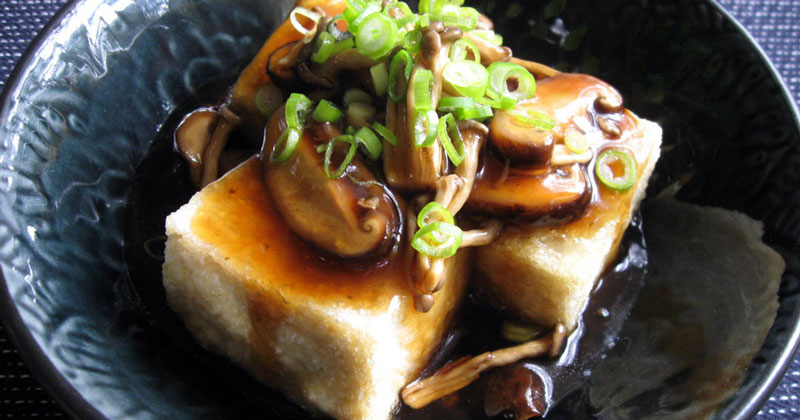
If you’re fond of tofu but long for a bit more taste, then you must try Agedashi Dofu. The dish features deep-fried tofu that one serves in a hot broth made with Japanese stock, wine, and soy sauce, garnished with Japanese spring onion (negi) and bonito flakes.
The stock is absorbed by the tofu without softening the crispy outer edge. Often eaten as a starter before your main meal arrives and it is one of the most popular dishes amongst foreigners and Japanese alike.
Senbei
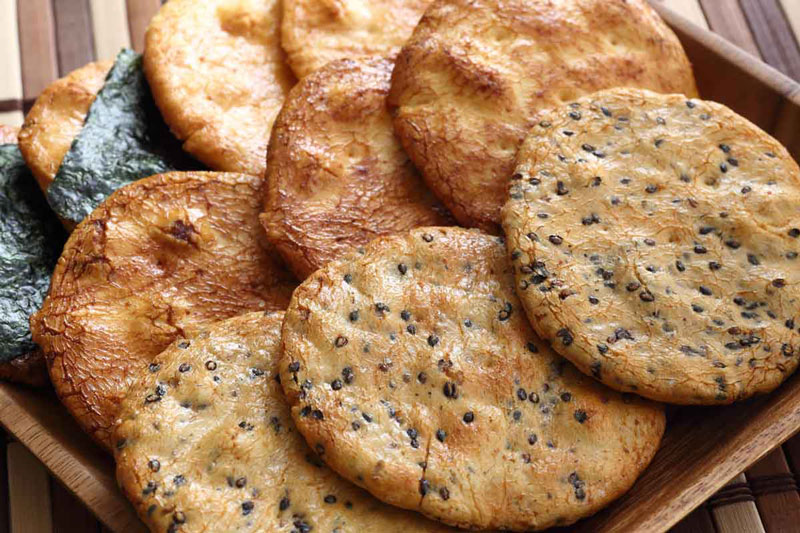
Senbei is basically Japanese rice crackers, both savoury and sweet. Serve them often with Japanese green tea and offer to guests. Normally, bake or grill senbei, but traditionally, cook them with charcoal. Brush the rice crackers with different sauces to add flavour. You can also find them wrapped with Japanese seaweed (nori), or serve them with salt or green garnishes.
Nattō
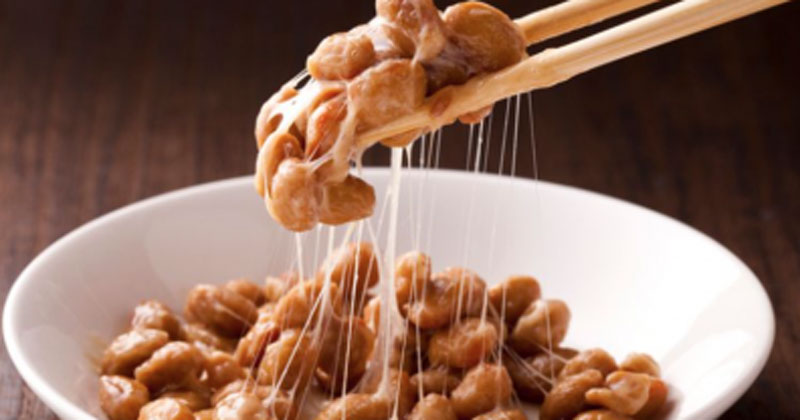
Nattō, often regarded as the Marmite of Japanese cuisine, polarizes with its distinctive sticky texture and potent aroma. While an acquired taste, this fermented soybean dish is a powerhouse of nutrition. Nattō is revered for its probiotic properties that support a balanced gut microbiome. Furthermore, typically enjoyed at breakfast, it is served with a piquant karashi mustard and a splash of soy sauce, adding depth to its flavor profile. Moreover, as a staple in food in Japan, Nattō exemplifies the traditional dietary wisdom that has been passed down through generations, thus making it a vital component of Japanese food culture.
Noodles

Another staple of Japanese food is the main substitute for any Japanese rice-based dish. Noodles were first documented to exist in Japan during the Nara period. Japan received its noodles from China, which were originally based on rice flour. Over time, Japan developed wheat-based noodles by the Kamakura period. Now, Japan boasts at least 8 types of noodles, with countless preparation methods. If you haven’t tried them all, start slurping!
Ramen

Ramen is Japan’s most famous noodle soup, consisting of a bowl of sliced meat. A delicious pork/miso/soy broth, vegetables, and wheat noodles made from flour, salt, and water. Furthermore, contrary to popular belief, Ramen, a noodle dish, actually originated from China. Further, introduced to Japan in the nineteenth century. Moreover, today, you can find a Ramen joint, a haven for noodle lovers, in every major city around the world, attesting to its global popularity. Additionally, best enjoyed hot, Ramen noodles are meant to be devoured quickly. Lastly, what’s more, this dish is arguably Japan’s most popular culinary export, cherished by noodle enthusiasts everywhere.
Udon
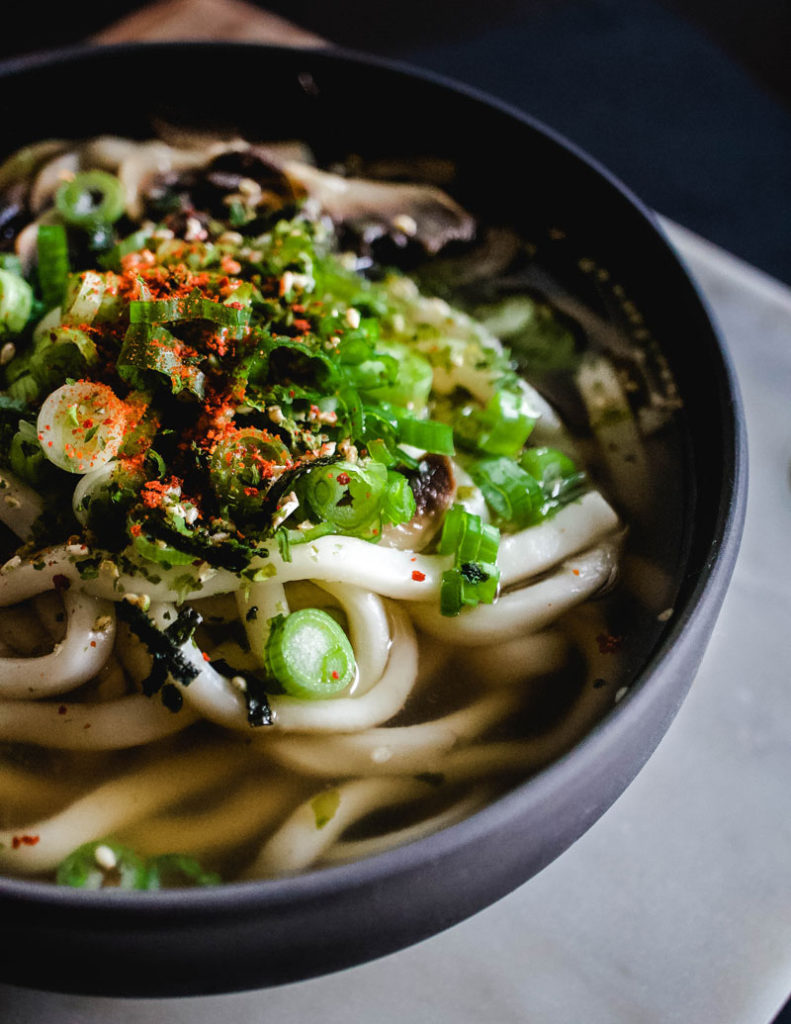
Udon noodles are a type of wheat-flour noodle that is thicker and chewier than the more common ramen noodle. Additionally, in their simplest form, people often eat Udon noodles in a light broth called kakejiru. It is made of dashi, soy sauce, mirin, and is topped with Japanese green onions. Furthermore, these noodles can be enjoyed hot or cold, with the broth varying in depth, flavor. Further. the color depending on the region of Japan. Moreover, other notable ingredients that may be added to an Udon Noodle soup. It includes Prawn Tempura, Kakiage, deep-fried tofu pockets, and fish cakes. Each bringing its own unique texture and taste to the dish. Lastly, what’s more, Udon offers a versatile canvas for a range of delicious toppings and mix-ins, making it a staple in Japanese cuisine.
Okinawa Soba
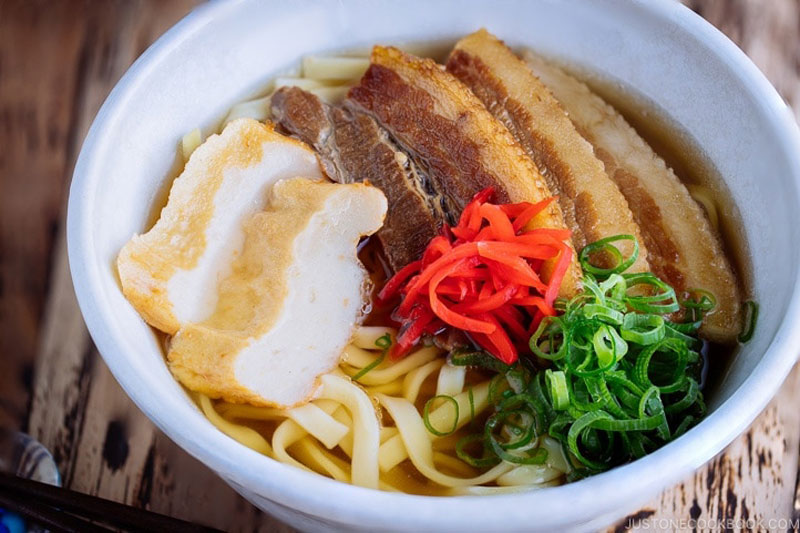
Not surprisingly, this dish is a version of a Soba noodle dish hailing from Okinawa. One of the most unique parts of Japan (and that’s saying something!) Okinawan cuisine is known for its meat, in particular pork.
Okinawa Soba is a noodle dish. It includes pork belly cooked in soy sauce and topped with fish cakes, fish paste, sliced scallions, and pickled ginger. Moreover, the broth consists of dashi and pork; it’s essentially a halfway meeting point between Ramen and your stock standard dashi noodle broth. Finally, this fusion creates a unique flavor profile that’s both familiar and distinctively Okinawan.
Tsukemen

Tsukemen, a modern twist on traditional Japanese cuisine, offers a refreshing take on noodles. This dish features chilled noodles served alongside a separate bowl of steaming broth. Further, inviting diners to dip and savor each bite of the noodle. Invented in 1961, Tsukemen stands out for its robust dipping sauce. It packs a more intense flavor than typical Ramen broth. Accompaniments like Tamago omelettes, crisp nori, and succulent chashu enhance the experience. Tsukemen a beloved addition to the noodle dishes in Japan. Furthermore, it’s a culinary innovation that continues to captivate food lovers. Adding depth to the rich Japanese food.
Soups & Stews

Japanese cuisine, synonymous with popular Japanese food dishes, encompasses a rich array of flavors and culinary traditions. Furthermore, soups and stews, integral components of Japanese food culture, hold a special place in this gastronomic landscape. Moreover, whether referred to as hot pots or soups, these dishes are undeniably delightful. Additionally, embodying warmth and communal spirit, they are a staple from home kitchens to the menus of teishoku set meals in restaurants. Finally, enhanced with dashi broths or served as hearty hot pots, these dishes elevate any dining experience.
Shabu-Shabu
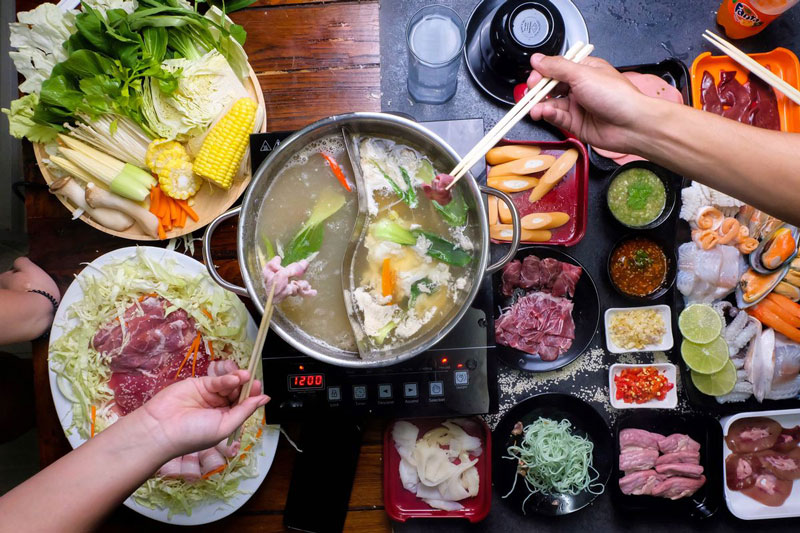
A Japanese nabemono hot pot dish, Shabu-Shabu is a communal dish that involves diners boiling thin slices of meat and vegetables in a broth and then dipping in sauces before being eaten. Some ingredients cooked in Shabu-Shabu include beef, cabbage, shungiku green onion (negi), carrots, and broccoli… hot pot heaven! Serve the shabu-shabu ingredients raw, and cook them tableside during the meal, unlike other types of hot pot. Scarlett Johansson and Bill Murray share this meal in Lost in Translation. This meal is shared by Scarlett Johanssen & Bill Murray in Lost in Translation.
Miso Soup
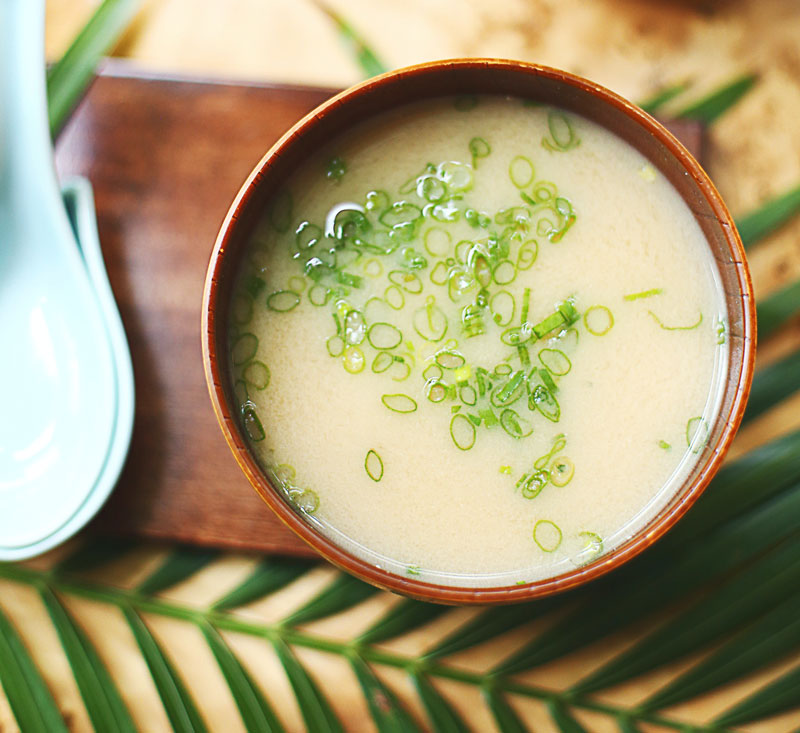
Almost 75% of people in Japan drink miso soup at least once a day. Make the miso soup broth from water, dashi stock, and miso paste, and add seaweed and tofu. Furthermore, use fermented soya beans, barley, or rice malt to make the paste that flavours the soup. Indeed, miso is such an essential part of traditional Japanese cooking and has its roots in ancient times. Miso soup was a popular japanese cusine of the Samurai during the Kamakura and civil war periods.
Sukiyaki
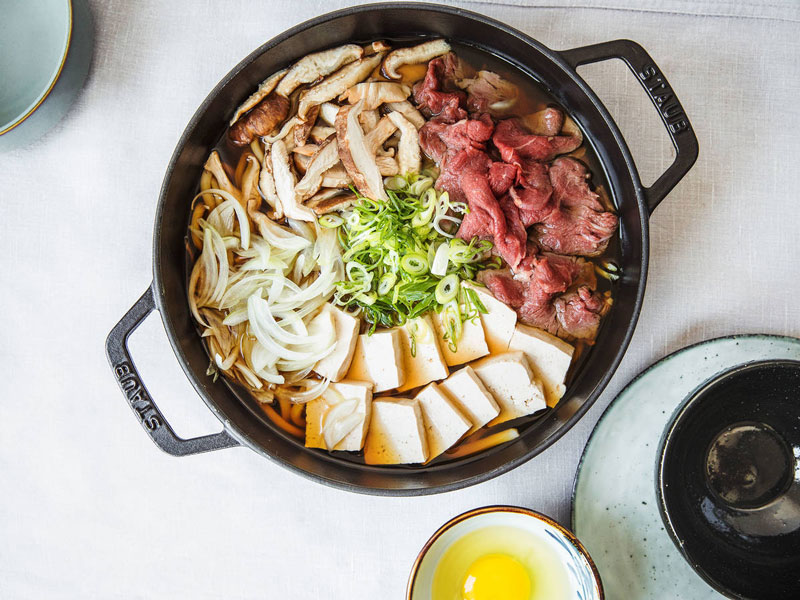
A cooked skillet communal dish. Add soy sauce, sugar, and mirin (Japanese wine) and cook them slowly. Friends and family enjoy sukiyaki together. Diners add meat or vegetable ingredients to the pot during the meal. When the ingredients are cooked, they take them out and dip them in a small bowl of raw beaten eggs. Best enjoyed in a restaurant and commonly eaten in Japan as a winter dish at new year parties.
Chankonabe
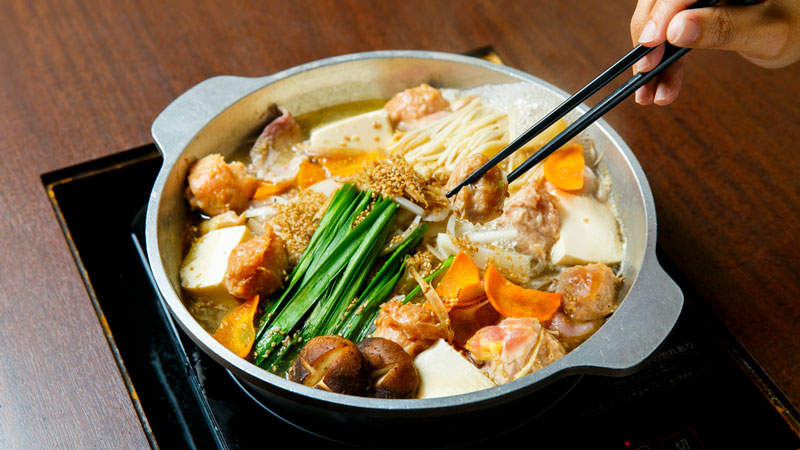
The main dish favored by Sumo wrestlers is Chankonabe. There isn’t actually a defined recipe for this hearty stew beyond the simmering of the main ingredients in vast quantities. These include proteins such as chicken, beef, fish, or tofu, and a variety of vegetables. For example cabbage, potatoes, mushrooms, bok choy, and radishes, all melded together in a rich broth. Furthermore, considering their need to bulk up, Sumo wrestlers aim for substantial portions. Moreover, they consume an average of 5,500 calories per day to maintain their massive physique. Additionally, this high-calorie intake is crucial for their intense training regimen. Lastly, what’s more, the communal aspect of preparing and consuming Chankonabe. It is an integral part of the sumo culture, promoting both physical strength and team bonding.



































